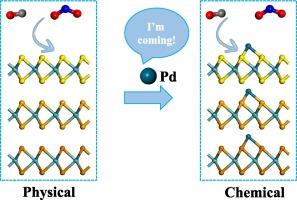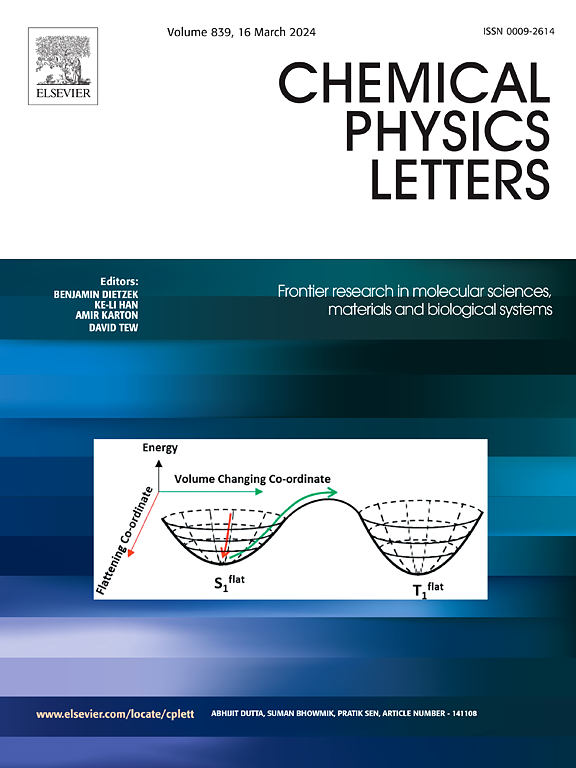钯辅助 MoX2(X = Se、S、Te)捕获开关柜中空气分解产物(CO、NO2)的 DFT 见解
IF 2.8
3区 化学
Q3 CHEMISTRY, PHYSICAL
引用次数: 0
摘要
选择 MoSe2、MoS2 和 MoTe2 衬底来检测开关柜中的空气(CO、NO2)分解产物。为了提高衬底的检测能力,引入了掺杂金属钯的方法。首先研究了 Pd 对基底的影响,通过分析结构、结合能、带隙和态密度的变化,发现 Pd 能有效提高基底的导电性。目标气体在初始基底上的吸附属于物理吸附,而 Pd 的加入增强了三种基底对 CO 和 NO2 的吸附能力,并将其转化为化学吸附。气体被三种改性基底吸附后,会引起带隙的减小,而二氧化氮引起的变化大于一氧化碳。通过分析灵敏度和恢复时间,可以发现三种改性基底都能有效区分两种气体,并且在相应的测试温度下,每种吸附体系都有合适的恢复时间。本研究的结果可为 MoSe2、MoS2 和 MoTe2 检测开关柜内空气的分解产物提供理论支持。本文章由计算机程序翻译,如有差异,请以英文原文为准。

DFT insights upon Pd assisted MoX2 (X = Se, S, Te) capture of air decomposition products (CO, NO2) in switch cabinet
The MoSe2, MoS2, and MoTe2 substrates are selected for testing the decomposition products of air (CO, NO2) in the switch cabinet. The metal Pd doping method is introduced to improve the detection ability of the substrate. The effect of Pd on the substrate is firstly studied, it is found that Pd can effectively improve the conductivity of the substrate by analyzing the structures, binding energy, band gap and state density changes. The adsorption of the target gases on the initial substrates is physical adsorption, and the addition of Pd enhances the adsorption capacity of the three substrates for CO and NO2 and transforms it into chemical adsorption. After the gas is adsorbed on the three modified substrates, it will cause a decrease in the band gap, and the change caused by NO2 is greater than that of CO. By analyzing the sensitivity and recovery time, it is found that the three modified substrates can effectively distinguish the two gases, and each adsorption system has a suitable recovery time at the corresponding test temperature. The results of this study can provide theoretical support for MoSe2, MoS2, and MoTe2 in detecting the decomposition products of air inside switch cabinet.
求助全文
通过发布文献求助,成功后即可免费获取论文全文。
去求助
来源期刊

Chemical Physics Letters
化学-物理:原子、分子和化学物理
CiteScore
5.70
自引率
3.60%
发文量
798
审稿时长
33 days
期刊介绍:
Chemical Physics Letters has an open access mirror journal, Chemical Physics Letters: X, sharing the same aims and scope, editorial team, submission system and rigorous peer review.
Chemical Physics Letters publishes brief reports on molecules, interfaces, condensed phases, nanomaterials and nanostructures, polymers, biomolecular systems, and energy conversion and storage.
Criteria for publication are quality, urgency and impact. Further, experimental results reported in the journal have direct relevance for theory, and theoretical developments or non-routine computations relate directly to experiment. Manuscripts must satisfy these criteria and should not be minor extensions of previous work.
 求助内容:
求助内容: 应助结果提醒方式:
应助结果提醒方式:


